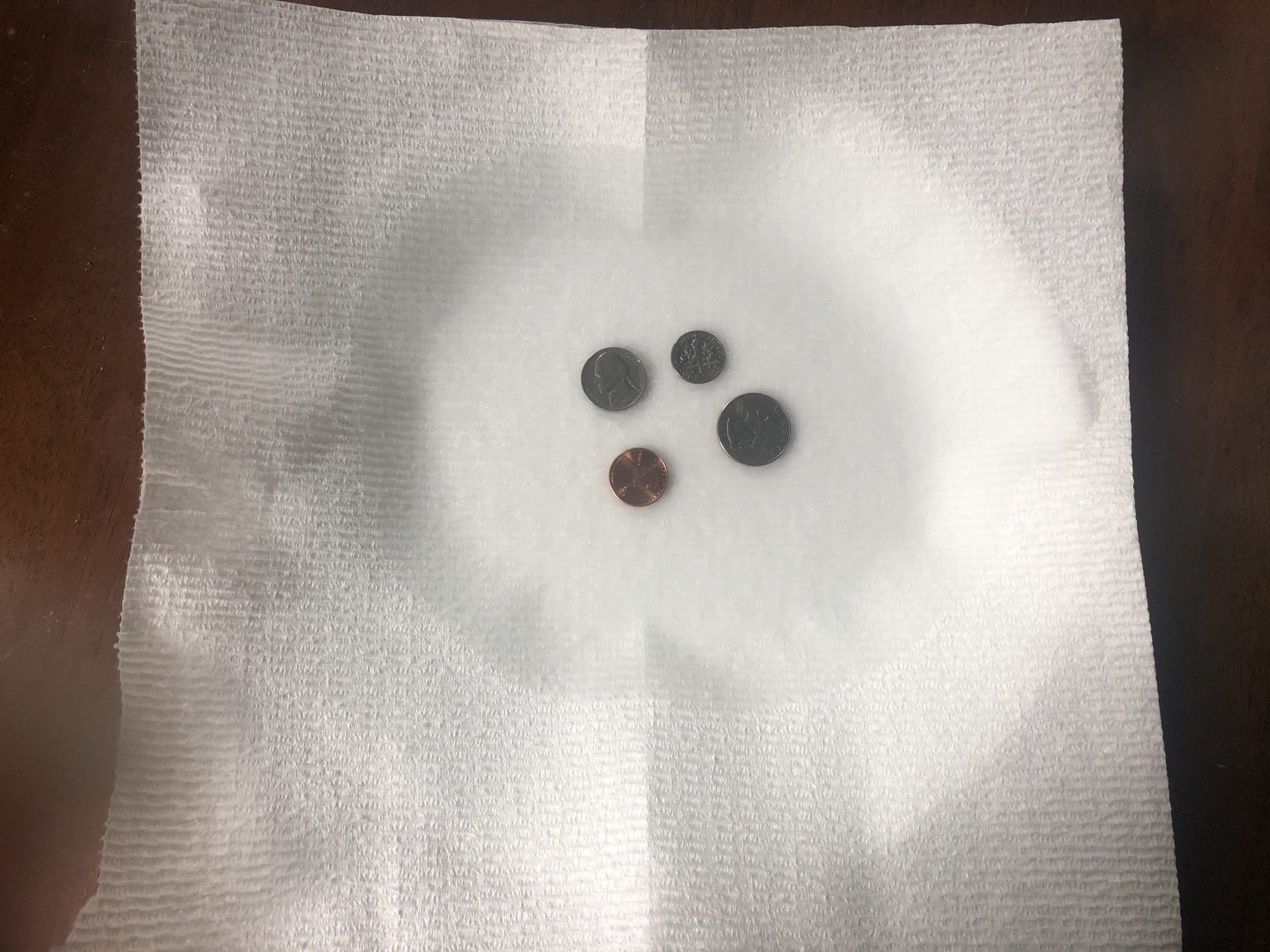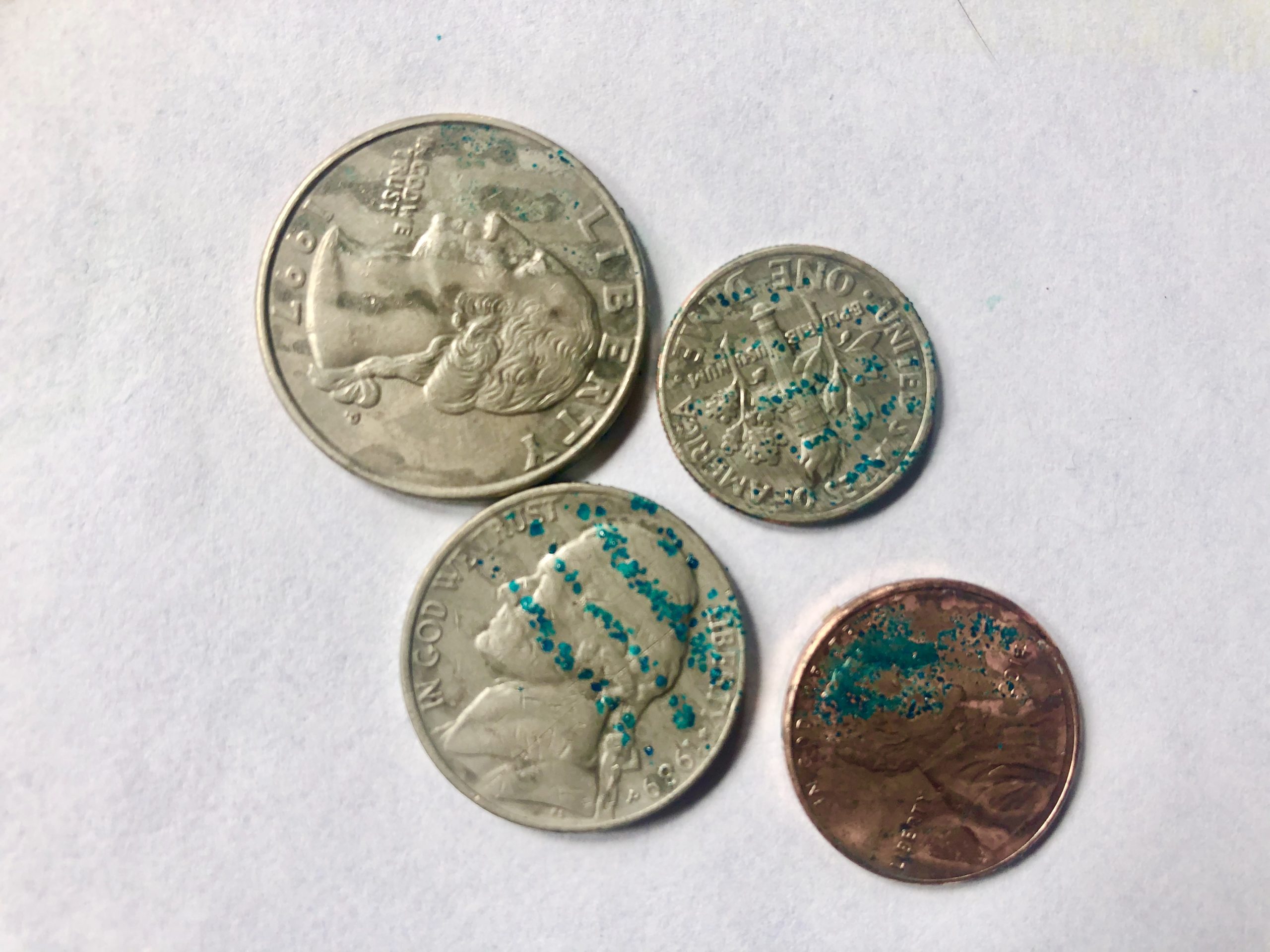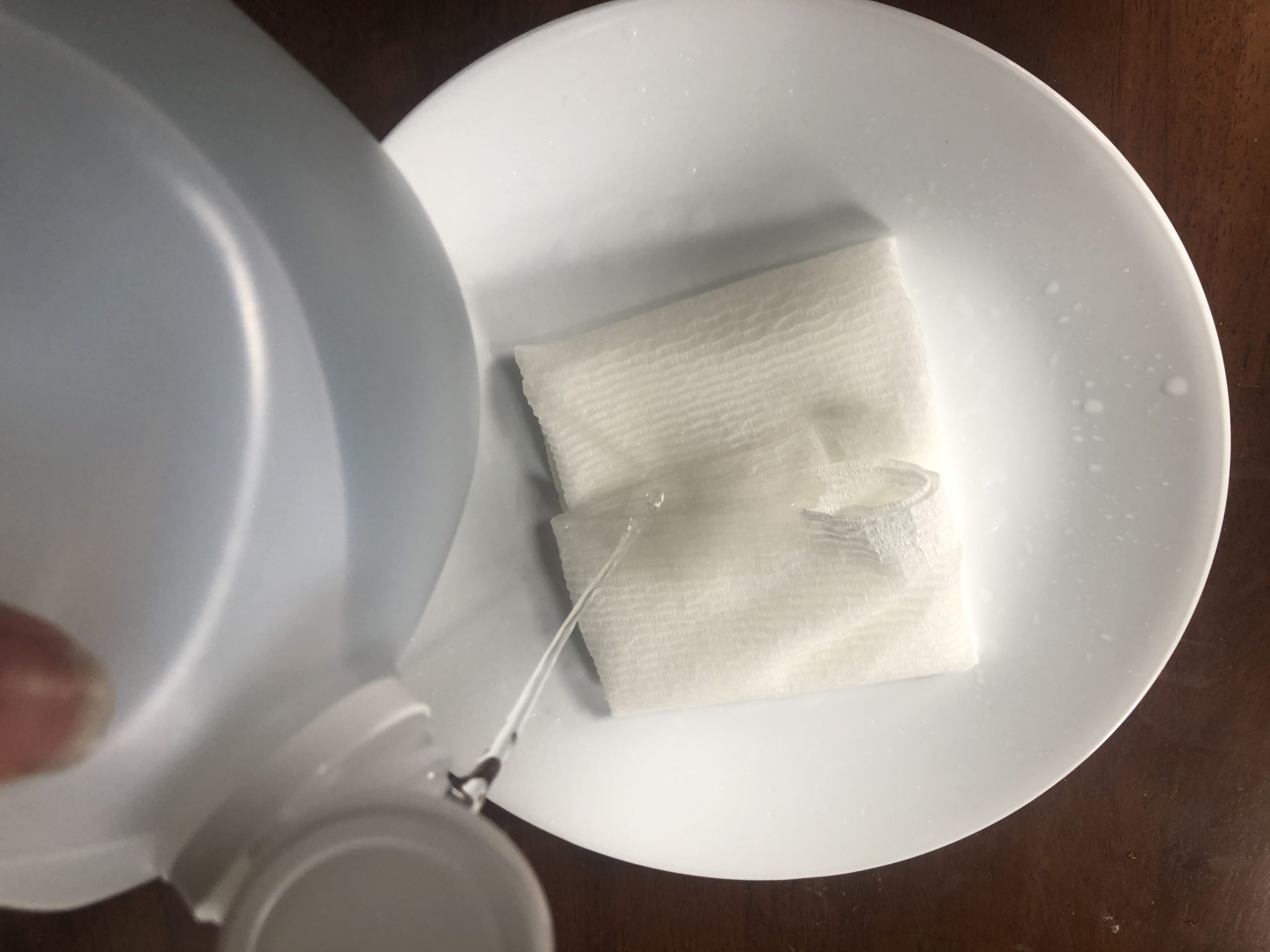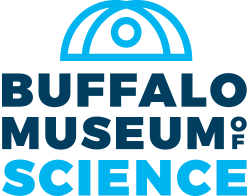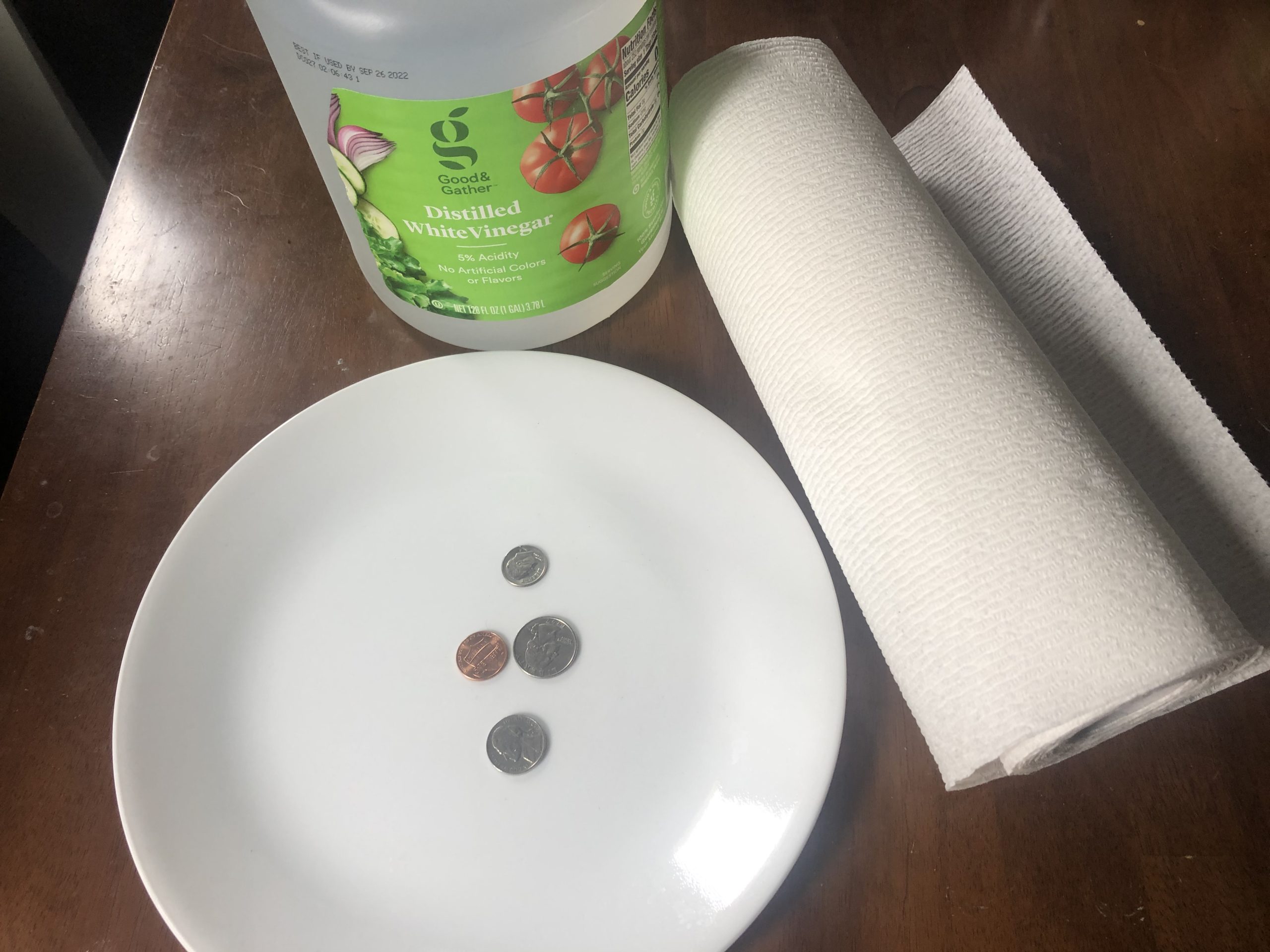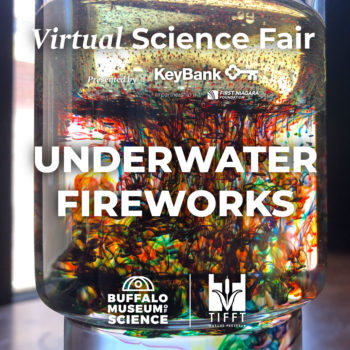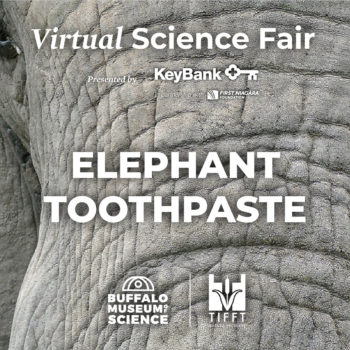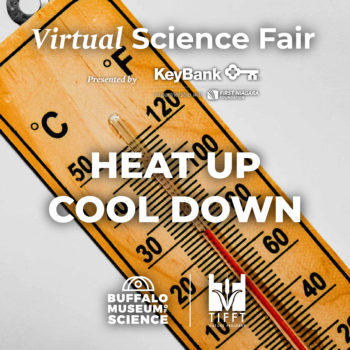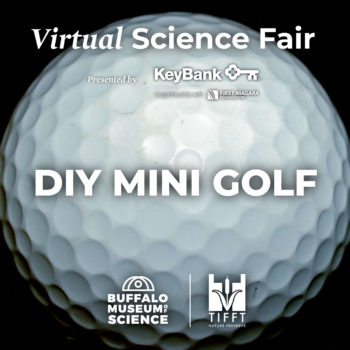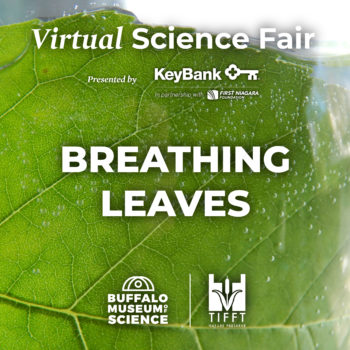Penny Chemistry

Have science fun as a family! Complete activities with parental supervision.
Materials:
- Coins
- A plate or bowl
- Vinegar (we used white)
- Paper towels
Procedure
- Fold 2-3 paper towels so it fits into your bowl or onto your plate.
- Place the coins on top of the paper towel, towards the center of the towel.
- Pour vinegar over the coins until the paper towel is saturated.
- Fold the paper towel around the coins and press down firmly on the coins.
- Now, we wait. Check on your coins over the next few hours, making sure to wrap them back up in the vinegar-soaked paper towel. Do you notice any changes?
- Let it sit overnight and check the coins the next day. What do you see?
- Be sure to take a picture or video to share in the Facebook comments on the Buffalo Museum of Science or Tifft Nature Preserve pages!
What’s it all about?
Coins are made up of different metals, like zinc or copper. And these metals are made up of things called atoms.
Atoms are made of three main things: positively charged PROTONS, negatively-charged ELECTRONS, and neutrally-charged NEUTRONS. When some of these component parts are given or taken away, the material changes.
In this chemical reaction, a negatively- charged electron is taken away from the copper. This reaction is called oxidation—and it’s just like rusting! When the copper atom loses this electron, it rusts and turns blue or green.
This reaction is why the Statue of Liberty is that light green color. Made primarily of copper, the statue was once a brown color. But over time, it rusted! That color was replaced with its characteristic green patina.
Try It!
- Do you have coins from different countries? Maybe some tokens from an arcade? Try them out and let us know if some react more or less than others!
- How green can you go? See what happens if you keep the reaction going for a few days! Keep your pennies wrapped and add more vinegar if it dries out.
- Add some salt with the vinegar. Does that change how fast the coins oxidizes and changes color?
